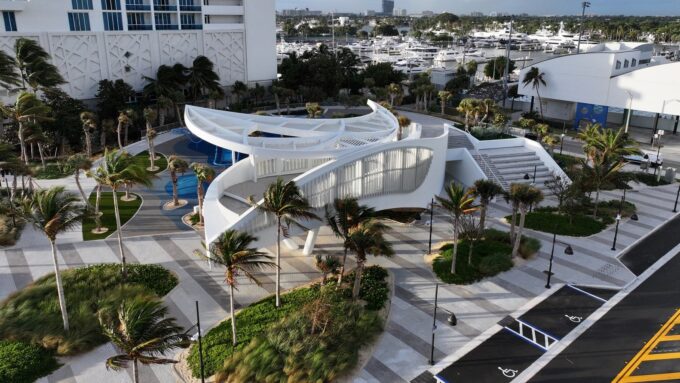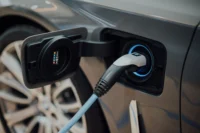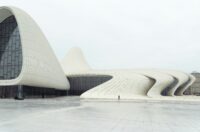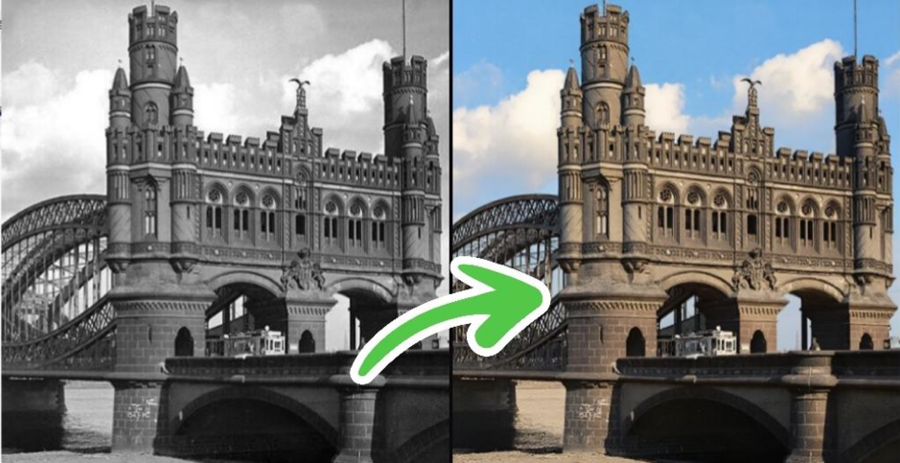- Home
- Articles
- Architectural Portfolio
- Architectral Presentation
- Inspirational Stories
- Architecture News
- Visualization
- BIM Industry
- Facade Design
- Parametric Design
- Career
- Landscape Architecture
- Construction
- Artificial Intelligence
- Sketching
- Design Softwares
- Diagrams
- Writing
- Architectural Tips
- Sustainability
- Courses
- Concept
- Technology
- History & Heritage
- Future of Architecture
- Guides & How-To
- Art & Culture
- Projects
- Interior Design
- Competitions
- Jobs
- Store
- Tools
- More
- Home
- Articles
- Architectural Portfolio
- Architectral Presentation
- Inspirational Stories
- Architecture News
- Visualization
- BIM Industry
- Facade Design
- Parametric Design
- Career
- Landscape Architecture
- Construction
- Artificial Intelligence
- Sketching
- Design Softwares
- Diagrams
- Writing
- Architectural Tips
- Sustainability
- Courses
- Concept
- Technology
- History & Heritage
- Future of Architecture
- Guides & How-To
- Art & Culture
- Projects
- Interior Design
- Competitions
- Jobs
- Store
- Tools
- More
The Best Equipment for Architectural Photography: Cameras, Lenses, and Accessories
Discover the essential gear for architectural photography, from high-resolution cameras and specialized lenses to tripods and editing tools. Learn how to capture stunning details, correct distortions, and enhance compositions with the best equipment, tailored for beginners and professionals alike. Elevate your shots with precision, clarity, and professional quality.

Capturing the beauty of architecture requires more than just a good eye; it demands the right tools. As architectural photographers, we know how crucial it is to have equipment that enhances precision and brings out the intricate details of every structure. Whether it’s a towering skyscraper or a quaint historic building, the right gear can make all the difference.
From specialized lenses to sturdy tripods, choosing the best equipment ensures we’re ready to tackle any lighting, angle, or perspective challenge. With so many options available, finding the perfect tools can feel overwhelming. That’s where we come in—to help you navigate the essentials and elevate your architectural photography to the next level.
Table of Contents
ToggleWhy Choosing The Right Equipment Matters
The right equipment ensures sharpness, clarity, and accurate representation of architectural details. Architectural photography demands precision to capture intricate patterns, textures, and lines. Professional gear minimizes distortion and enhances image quality, which is vital for showcasing structures effectively.
High-quality tools improve efficiency while adapting to challenging conditions. Wide-angle lenses, for instance, help capture broad compositions, while tilt-shift lenses correct perspective distortions. Durable tripods provide stability for long exposure shots, especially in low-light settings.
Choosing suitable gear reduces common errors in framing and focus. Improper tools can create distortions or fail to capture the essence of a structure. Using professional-grade cameras and lenses guarantees consistent results.
Cameras For Architectural Photography
Selecting the right camera is critical for capturing the intricate details of architectural designs. Superior resolution and dynamic range help ensure precision and clarity in every shot.
Sony A7R V
The Sony A7R V is a full-frame mirrorless camera built specifically for high-resolution work, delivering an impressive 61 megapixels of detail. This makes it a favorite among architectural photographers who need to capture fine textures like stone, glass reflections, or intricate interior details without losing clarity when zoomed in. It features a wide dynamic range that preserves highlights in bright skies while maintaining shadow details inside darker interiors. With 5-axis in-body image stabilization, it allows handheld shooting even in lower light without significant blur. Its autofocus system is both fast and precise, enabling quick composition adjustments on location. For architects or photographers working on professional portfolios, the A7R V ensures every line, edge, and texture of a structure is faithfully recorded.

Hasselblad X2D 100C
The Hasselblad X2D 100C is considered one of the ultimate cameras for architectural photography. It features a 100-megapixel medium-format sensor, which is significantly larger than full-frame, allowing it to capture immense amounts of detail with outstanding tonal range. This results in images that remain sharp even when printed at large sizes such as posters or billboards. Its 16-bit RAW files provide extraordinary color fidelity, ensuring materials like marble, steel, or wood are rendered with lifelike accuracy. Built-in image stabilization helps reduce shake when shooting at slow shutter speeds, making it useful for long interior exposures. For professionals working on commercial architectural projects, the X2D 100C represents the gold standard in both resolution and craftsmanship.

Fujifilm GFX 100S
The Fujifilm GFX 100S is a medium-format mirrorless camera with a 102-megapixel sensor. It delivers extraordinary dynamic range and tonal depth, allowing architectural photographers to capture the finest textures in building materials and complex lighting environments. Its in-body stabilization makes handheld shooting possible even at slower shutter speeds, while its compact size makes it much more portable than other medium-format systems. The GFX 100S is a strong choice for professionals who want uncompromising image quality without the bulk of traditional medium-format gear.

Canon EOS R5
The Canon EOS R5 is a full-frame mirrorless powerhouse offering 45 megapixels of resolution with superb low-light performance. For architectural photographers, its Dual Pixel autofocus system ensures pinpoint precision when focusing on building details or structural lines. Combined with Canon’s RF lens lineup, which includes exceptional wide-angle and tilt-shift options, the R5 excels in both stills and 8K video, making it a versatile tool for architects who want to present projects in multiple formats.

Lenses: The Most Crucial Component
Lenses are the cornerstone of architectural photography, determining perspective, sharpness, and accuracy. Choosing the right lens ensures distortion control and captures the intricate details of structures effectively.
Canon TS-E 17mm f/4L
The Canon TS-E 17mm f/4L is one of the widest tilt-shift lenses available and is highly regarded in architectural photography. Its unique design allows photographers to shift the lens to correct perspective distortion, ensuring that tall buildings retain straight vertical lines instead of converging at the top. The tilt function enables adjustments to the plane of focus, which is invaluable for capturing both the foreground and background in sharp detail without excessive reliance on small apertures. The 17mm focal length offers an expansive field of view, perfect for tight interiors or dramatic exterior shots. With superb sharpness across the frame and minimal chromatic aberration, it’s a lens that delivers technical accuracy and creative flexibility in equal measure.

Nikon PC NIKKOR 19mm f/4E
Nikon’s PC NIKKOR 19mm f/4E is the brand’s most advanced perspective-control lens and a true workhorse for architectural photographers. Its wide-angle view allows for dynamic compositions, while the precise tilt and shift movements give photographers full control over distortion correction and focus placement. This means you can capture skyscrapers or interiors without exaggerated distortion, ensuring professional, publish-ready results. The lens employs high-quality optical elements to minimize flare and ghosting, which is especially important when shooting buildings with reflective glass facades. Its mechanical precision allows for smooth, reliable adjustments, making it a must-have lens for Nikon users who prioritize architectural accuracy.

Sigma 14-24mm f/2.8 DG DN Art
The Sigma 14-24mm f/2.8 Art lens is a high-performing wide-angle zoom designed for architectural and landscape photography. It is renowned for edge-to-edge sharpness and minimal distortion, even at its widest focal lengths. The fast f/2.8 aperture provides versatility in low-light interiors, while its robust build makes it suitable for demanding on-site conditions. For architectural photographers who need flexibility without sacrificing optical performance, this is one of the best zooms available.

Essential Accessories For Architectural Photography
The right accessories elevate architectural photography by enhancing precision and quality. Below are the most essential items to consider for consistent and professional results.
Tripods And Stabilizers & External Flashes And Lights
Tripods and stabilizers ensure stability and minimize motion blur during long exposure shots. A sturdy tripod allows us to maintain sharpness while capturing structures in low-light settings. Models like the Gitzo GT3543LS and Manfrotto MT055CXPRO4 are durable and highly reliable. For additional flexibility, stabilizers like the DJI Ronin-S provide smooth movement when recording architectural videos.
Manfrotto MT055CXPRO4
The Manfrotto MT055CXPRO4 is a carbon-fiber tripod designed for portability and professional use. It combines lightweight construction with excellent stability, making it a reliable companion for city walks or on-location architectural shoots. Its adjustable center column allows for unique shooting angles, such as low-to-the-ground perspectives, which can be valuable in creative architectural compositions. It strikes a balance between affordability and performance, making it a popular choice among both advanced amateurs and professionals.

Gitzo GT5563GS Tripod
The Gitzo GT5563GS is a top-of-the-line carbon-fiber tripod designed to provide extreme stability, even under heavy camera and lens combinations. Its robust construction ensures vibration-free performance, which is critical for long-exposure architectural shots, especially in low light or windy outdoor conditions. Despite its strength, the carbon-fiber build keeps it relatively lightweight for transport, a major advantage when moving between sites. The tripod’s legs extend tall enough for elevated viewpoints, while its wide stance guarantees rigidity. For architectural photographers who cannot compromise on precision, the Gitzo GT5563GS is considered one of the most reliable tripods available.

Rotolight Titan X2
The Rotolight Titan X2 is a professional-grade continuous LED light panel that provides soft, even illumination ideal for architectural interiors. Its color accuracy is among the best in the industry, ensuring that materials like wood, stone, and textiles are represented in true-to-life tones. It allows precise control of both brightness and color temperature, making it adaptable to a wide range of environments. The Titan X2 is flicker-free, which ensures consistent results for both photography and videography. Its ability to replicate daylight or warm interior light helps balance natural and artificial sources, making it perfect for creating evenly lit spaces without harsh shadows.

Profoto B10
The Profoto B10 is a portable flash unit that combines compact size with professional-level output. Despite being small enough to fit into a camera bag, it delivers powerful bursts of light capable of filling large interior spaces. It features adjustable color temperature to match existing lighting conditions, and its high-speed sync allows for shooting at wide apertures even in bright daylight. The B10 is known for its consistent light quality, which makes it easy to blend with natural light for balanced architectural images. With Profoto’s wide range of light modifiers, the B10 can be adapted for diffused, dramatic, or directional lighting setups, giving architectural photographers full creative control.

Editing Tools And Software
Editing tools are essential for refining architectural photos, ensuring precision and professional-quality results. We focus on selecting software and hardware tailored for efficient post-processing.
Adobe Photoshop
Adobe Photoshop is the cornerstone of post-production for architectural photography. It allows for advanced perspective correction, which is often necessary when shooting in tight spaces or at unusual angles. The software’s powerful layer and masking tools let photographers blend multiple exposures, enhance textures, and remove distracting elements such as wires, signs, or unwanted reflections. Its ability to fine-tune color ensures materials and lighting in architectural shots are represented faithfully, while its retouching capabilities help achieve a clean, polished look suitable for clients and publications.
DxO PhotoLab
DxO PhotoLab is a specialized editing tool that excels in extracting maximum detail from RAW files. It provides automated lens corrections, which reduce distortion and vignetting—common issues in wide-angle architectural photography. Its noise reduction technology is industry-leading, allowing for crisp and clear images even in low-light environments. DxO’s local adjustment tools allow photographers to fine-tune specific areas of an image, such as bright skies or shadowed interiors, ensuring balanced exposure throughout the frame. For architectural professionals seeking technical perfection, PhotoLab offers workflow efficiency and high-end results.

Hardware Recommendations
Editing architectural photos efficiently requires dependable hardware that handles resource-intensive software and large files. A workstation or laptop equipped with a fast processor (Intel Core i9 or Apple M2 Max) and at least 32GB RAM ensures seamless multitasking. SSD storage of 1TB or more offers faster file access and storage for high-resolution images.
A 4K monitor like the Eizo ColorEdge or BenQ PD3220U provides accurate color representation and sharp details. Professional photographers may benefit from a hardware calibrator, such as the X-Rite i1Display Pro, ensuring consistent color accuracy across displays. High-quality input devices like the Wacom Intuos Pro tablet enhance precision during intricate edits.
Intel Core i9 Workstation with 32GB RAM and 4K Monitor
A powerful editing workstation is essential for handling the massive file sizes produced by modern high-resolution cameras. An Intel Core i9 processor provides the speed needed for editing large RAW images without lag, while 32GB of RAM ensures smooth multitasking across editing software like Photoshop and DxO PhotoLab. A 4K monitor, such as the Eizo ColorEdge or BenQ PD3220U, provides sharp resolution and wide color gamut coverage, allowing photographers to see accurate previews of their work. When paired with a hardware calibrator like the X-Rite i1Display Pro, the workstation ensures precise color management so that prints and digital displays match the intended tones of the photographer.
Conclusion
Selecting the right equipment for architectural photography is essential for producing images that combine technical accuracy with artistic impact. High-resolution cameras provide the clarity needed to capture intricate textures, while wide-angle and tilt-shift lenses help maintain straight lines and true perspectives, avoiding distortions that can distract from a building’s design. Reliable tripods ensure stability during long exposures, and lighting tools or filters allow photographers to handle difficult conditions both indoors and outdoors. Powerful editing software then completes the workflow, correcting perspective, balancing tones, and refining details for a polished, professional result.
Both beginners and professionals benefit from tailoring their choices to their needs. Entry-level gear offers an affordable way to build skills and achieve strong results, while advanced setups deliver the resolution, precision, and creative control required for large-scale or commercial projects. By making informed investments in the right tools, photographers can overcome technical challenges, highlight architectural beauty with precision, and create images that truly capture the essence of design.
- architectural camera equipment
- architectural photography brands
- architectural photography gear
- architectural photography setup
- architecture photo accessories
- architecture photography equipment
- architecture photography tools
- best architectural photography accessories
- best camera bodies for architecture
- best cameras for architectural photography
- best cameras for architecture photos
- best drones for architectural photography
- best equipment for architecture photos
- best filters for architectural photography
- best lenses for architectural photography
- best lenses for architecture
- best lighting gear architectural shoots
- best mirrorless cameras architecture
- best smartphone cameras for architecture
- best tilt-shift lenses architecture
- best tripods for architecture photos
- best wide-angle lenses architecture
- camera accessories for architects
- gear for architectural photographers
- high-quality architecture lenses
- photography equipment for architects
- professional architectural camera
- rchitectural photography cameras
- top cameras for architectural photography
- wide-angle lenses for architecture
4 Comments
Submit your architectural projects
Follow these steps for submission your project. Submission FormLatest Posts
How to Restore Old Photos of Historical Buildings with AI Tools
Introduction To restore old photos is essential since these contain invaluable memories,...
From Las Vegas to Rome: A Visual Journey by Iwan Baan at Princeton University
The Princeton University School of Architecture presents “From Las Vegas to Rome”...
Unlocking the Art of Architectural Photography: Techniques, Tips, and Equipment Guide
Explore the captivating world of architectural photography in our latest article. Discover...
Essential Tips and Techniques for Stunning Architectural Model Photography
Discover the art of architectural model photography, where precision meets creativity. Learn...











I found the article informative. It talks about the tools needed for architectural photography.
This post gives a good overview of the equipment required for architectural photography. I learned a bit about lenses.
The article explains different cameras and accessories for architectural photography. It’s helpful for beginners.
This article has a lot of information about cameras and lenses for architectural photography. It’s helpful for someone who is learning about the equipment needed. I think the tips on tripods and accessories are useful too.